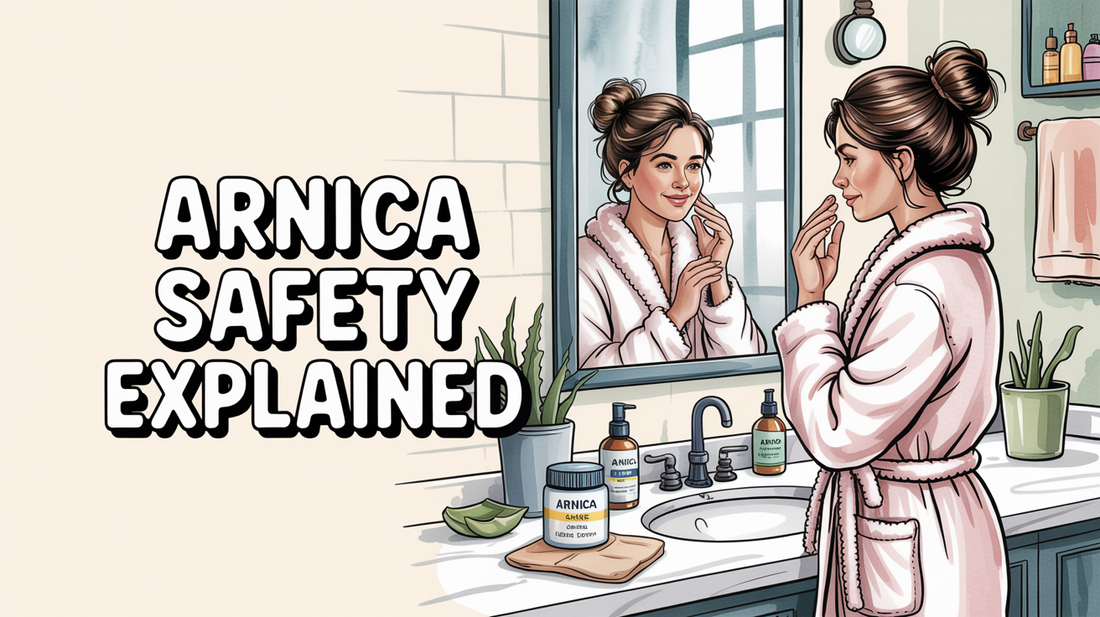Where not to use arnica?
When considering the use of arnica, it’s important to understand where it should not be applied. This post aims to highlight arnica safety, discuss where not to apply, and outline essential skin precautions to keep in mind. We have organized this information into three sections to help you navigate the topic easily.
Places to Avoid Applying Arnica
Using arnica in certain areas is not advisable due to potential adverse reactions. It’s best to avoid applying it to open wounds, cuts, or broken skin as it can lead to irritation and may delay the healing process. Additionally, mucous membranes such as those in the eyes, nose, mouth, and genitals are highly sensitive and more prone to severe reactions.
Other areas to steer clear of include regions with active infections or rashes, as arnica might worsen these existing skin conditions. It’s also crucial to avoid using it around surgical incisions until they are fully healed, to reduce the risk of contamination and ensure a smooth recovery. Lastly, applying arnica on children under 2 years old should only occur under medical supervision due to their increased sensitivity.
- Avoid open wounds, cuts, or broken skin to prevent irritation.
- Stay clear of mucous membranes (eyes, nose, mouth, genitals).
- Do not apply on areas with active infections or rashes.
- Keep away from surgical incisions until fully healed.
- Use caution with children under 2 years old without medical oversight.
Try It Tonight: Eye & Skin Refresh ✨
- Remove makeup and cleanse gently with lukewarm water.
- Apply a cool compress or take a few deep breaths to relax facial tension.
- Lightly dab a pea-sized amount of Jane Vine Arnica Gel under eyes or on areas of concern. Always patch-test first if you’re new to arnica-based skincare.
Why It Matters
Understanding arnica safety precautions is essential because improper use can lead to complications. For instance, repeated exposure to arnica can pose a risk of skin sensitization, potentially resulting in allergic contact dermatitis. Additionally, if applied on damaged skin, there may be concerns regarding systemic absorption, allowing more compounds to penetrate into the bloodstream.
Moreover, drug interactions are another important factor to consider. Arnica may interfere with blood thinners and other medications, so being cautious about its use is vital. Lastly, the FDA has classified topical arnica as generally safe only for use on intact skin, making it crucial to follow these safety guidelines closely.
- Be aware of skin sensitization risks with repeated exposure.
- Consider systemic absorption concerns on damaged skin.
- Watch for potential drug interactions with other medications.
- Avoid delays in the healing process by using arnica improperly.
- Remember that the FDA classifies arnica as safe only for intact skin.
Why We Recommend a Gentle Helper 🌿
Jane Vine Arnica Gel is formulated for quick absorption and a soothing, lightweight feel. It may support a calm routine and help reduce the appearance of puffiness, dark circles, and skin stress over time.
- Fast-absorbing comfort—no greasy residue.
- Gentle, cooling sensation designed for delicate skin.
- Clean, naturally inspired formula with a fresh finish.
Safe Alternatives 🔍
There are several safe alternatives that can provide similar benefits to arnica for pain relief and inflammation without the associated risks. Cold therapy, such as ice packs, can effectively reduce inflammation and numb pain safely for most injuries. Aloe vera gel is another gentle option, known for its soothing anti-inflammatory properties that are suitable for sensitive skin areas.
Witch hazel serves as a natural astringent that can help reduce swelling without the concerns of penetration. Additionally, over-the-counter topical NSAIDs offer clinically proven pain relief with established safety profiles. Gentle massage with carrier oils can also improve circulation and alleviate muscle tension without the need for active compounds.
- Cold therapy (ice packs) safely numbs pain.
- Aloe vera gel is great for sensitive skin.
- Witch hazel can reduce swelling naturally.
- Over-the-counter topical NSAIDs provide proven relief.
- Gentle massage with carrier oils enhances circulation.

